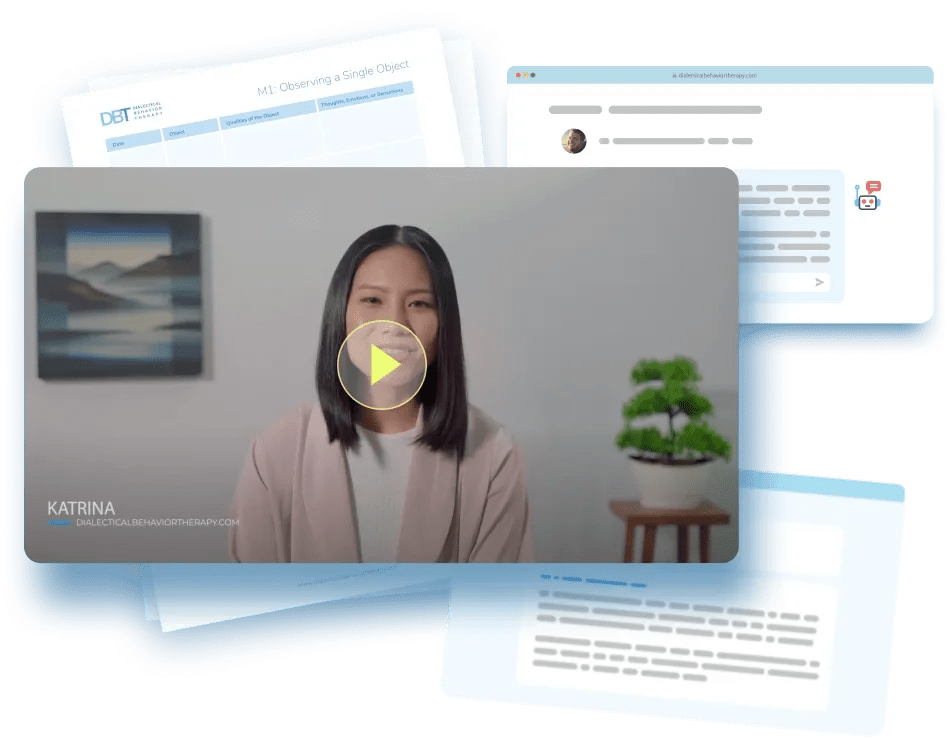PR4: Progressive Muscle Relaxation
Virtual Coach
Work step-by-step through the Problem-Solving, Coping & Relapse-Prevention exercise with the virtual coach.
Introduction
Calming the body and mind often starts with tools like the STOPP Card to create a mental pause, or Diaphragmatic Breathing to slow the stress response. But tension doesn’t always begin in the mind. It often shows up first in the body, as tight shoulders, a clenched jaw, or restless legs, long before you’re fully aware of feeling stressed. That’s where Progressive Muscle Relaxation comes in.
Stress, anxiety, and chronic pain often show up first as a clenched jaw, hunched shoulders, or knotted calves long before you notice you’re upset. Progressive Muscle Relaxation (PMR), pioneered by Edmund Jacobson, teams deliberate tension with slow release so you can spot hidden tight spots and train your nervous system to switch from fight-or-flight to rest-and-digest on command. Meta-analyses find PMR rivals mindfulness and slow breathing for lowering cortisol, blood pressure, and insomnia within two weeks.
Instructions
Goal: Practice the full 16-muscle sequence once daily for 14 days, plus a 3-group “mini-PMR” whenever tension ≥ 6 / 10.
Full run-time: ~12 minutes
Step 1: Set Up
Sit or lie down, spine straight. Silence phone.
Cue: “Ready, begin.”
Pro-tip: Dim lights if possible.
Step 2: Hands & Arms
Curl fists for 5 seconds, then release for 10. Repeat with biceps.
Cue: “Tight … relax.”
Pro-tip: Inhale on tension, exhale on release.
Step 3: Face & Shoulders
Scrunch forehead, eyes; shrug shoulders.
Pro-tip: Notice the contrast as muscles release.
Step 4: Chest & Back
Inhale, arch back slightly → release.
Pro-tip: Don’t strain. Use mild tension only.
Step 5: Belly & Hips
Pull belly in → release; clench glutes → release.
Pro-tip: Keep breathing slow and steady.
Step 6: Legs
Tense thighs, then calves, then feet/toes. One group at a time.
Pro-tip: Point then flex toes for full range.
Step 7: Scan & Repeat Hotspots
Do a full-body scan; retension any area still > 3/10 tight.
Cue: “Let go.”
Pro-tip: Jaw and shoulders often need a second pass.
Step 8: Finish with 3 Breaths
Use a 4-7-8 diaphragmatic cycle.
Cue: “Calm …”
Pro-tip: Locks in the body’s relaxation response.
Step 9: Rate Tension
SUDS or tension scale 0–10 before vs. after; log result.
Pro-tip: Aim for ≥ 3-point drop. Use patterns to guide future practice.
Mini-PMR (60 Seconds)
- 1) Shoulders
- 2) Jaw
- 3) Hands
Tense for 3 seconds, release for 6 seconds. One cycle each. Use whenever tension spikes mid-day.
FAQs
I cramp or shake during tensing. Bad sign?
Reduce squeeze to 50 % strength or shorten tense time to 3 sec; PMR should never hurt.
Can I skip areas after an injury or surgery?
Yes! Visualize tensing the area instead, or simply breathe into it and release.
I get sleepy. Is this safe before driving?
PMR can drop alertness; schedule sessions at home or take a 2-minute energizing stretch afterward if you must drive.
How is this different from body scan mindfulness?
PMR adds active tension to sharpen awareness of contrast; scans rely on passive noticing. Many users blend both.
Disclaimer
If you have any behavioral health questions or concerns, please talk to your healthcare or mental health care provider. This article is supported by peer-reviewed research and information drawn from behavioral health societies and governmental agencies. However, it is not a substitute for professional behavioral health advice, diagnosis, or treatment.

